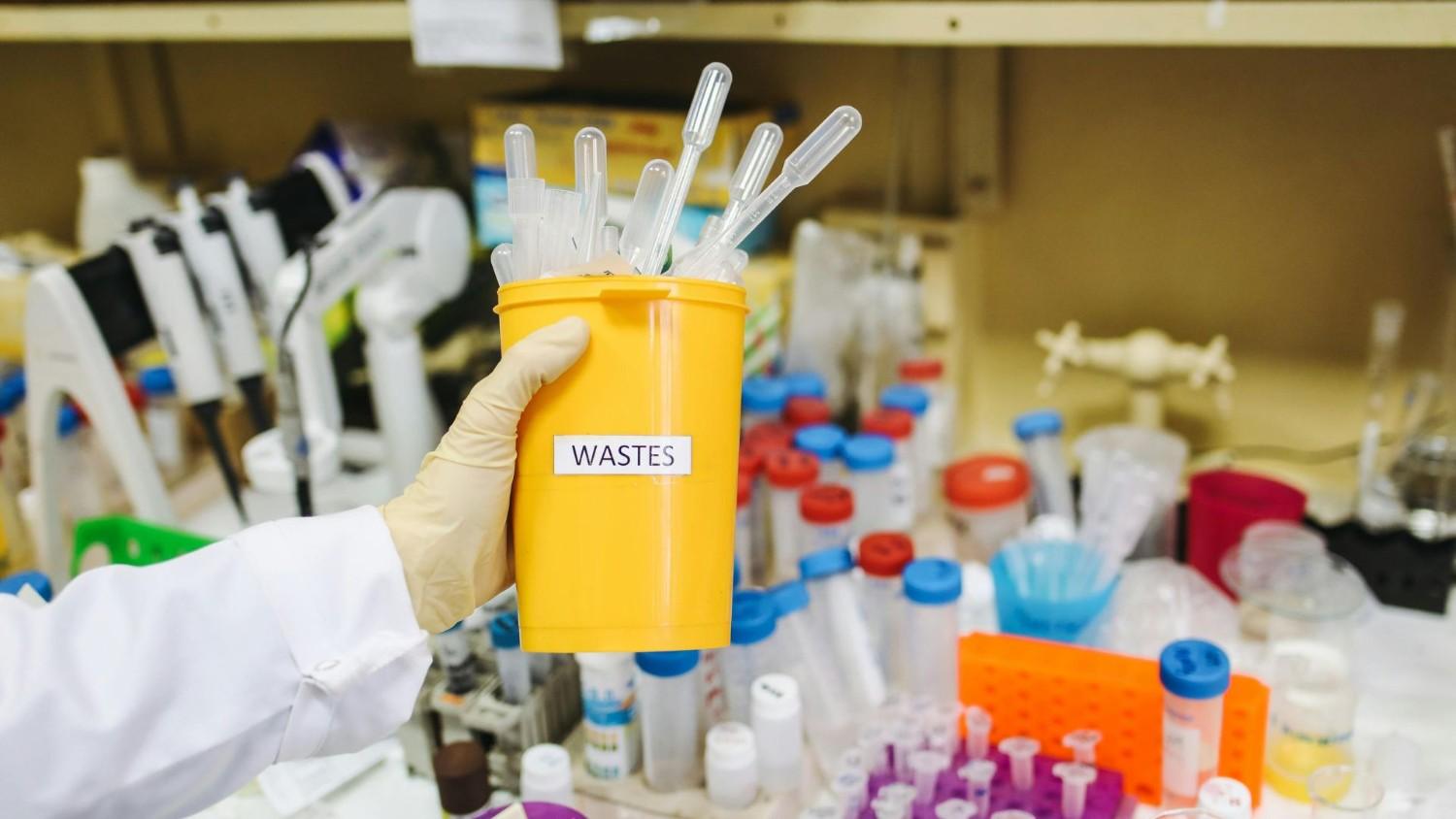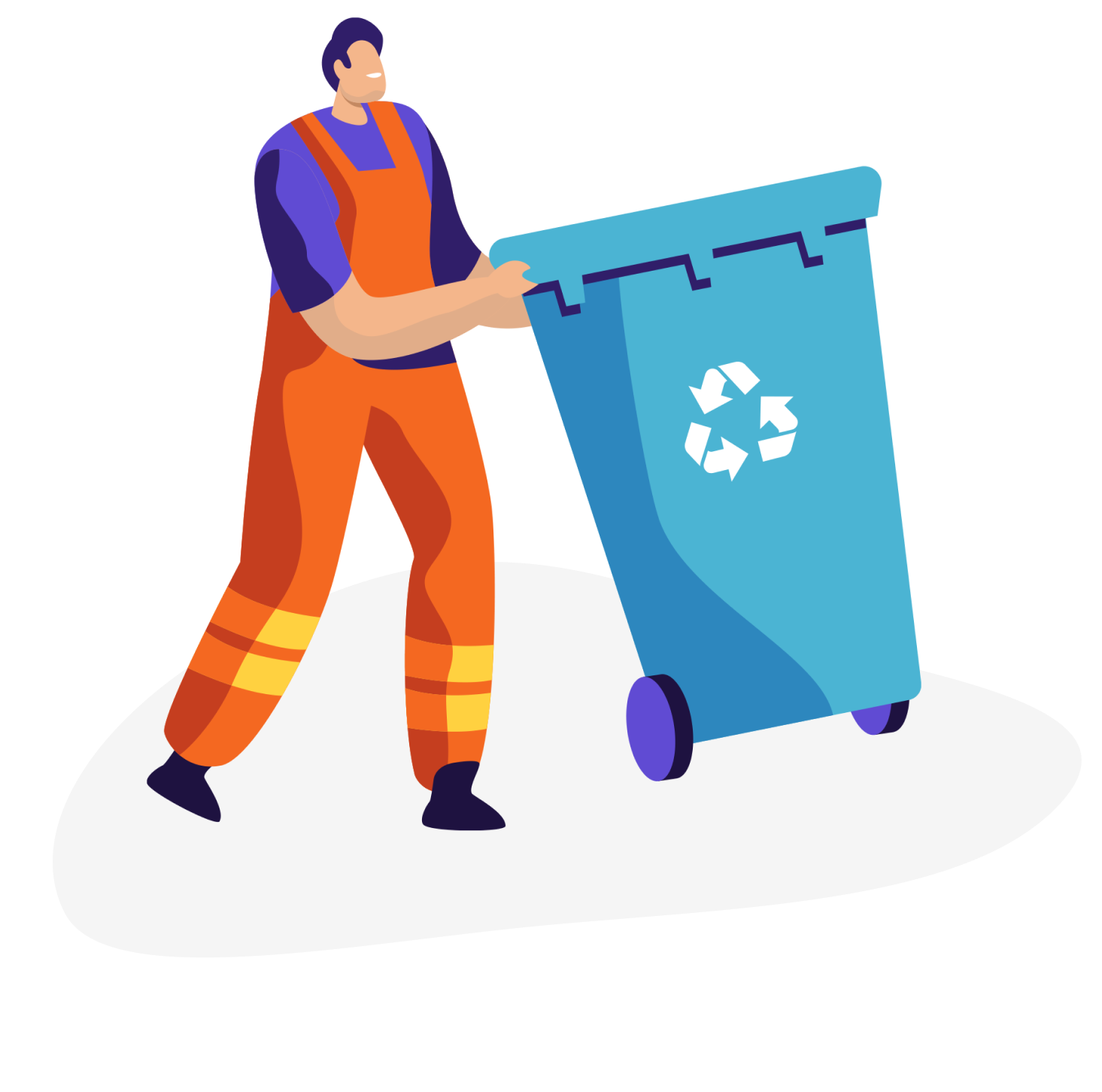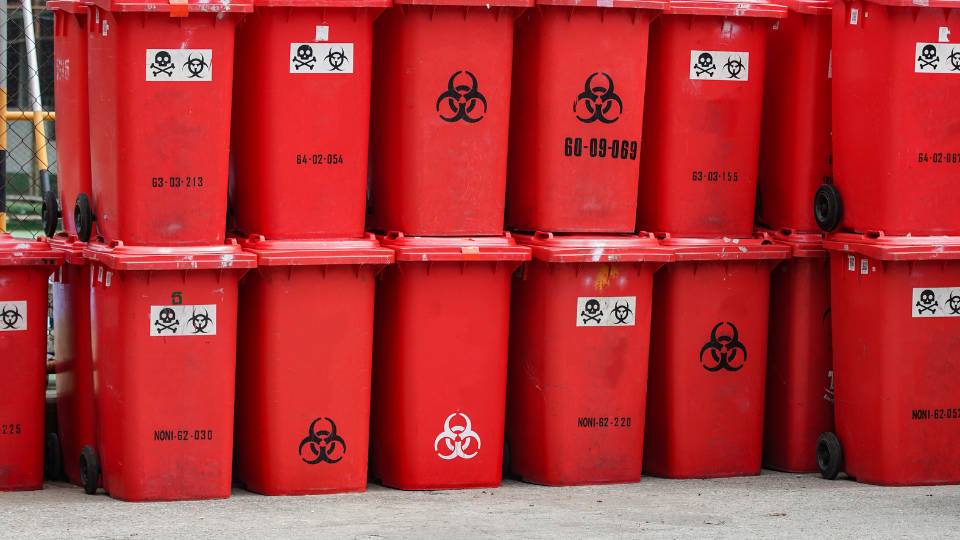
Hazardous waste poses significant risks to both the environment and human health, making its safe and responsible disposal a top priority.
In this guide, we discuss the various aspects of hazardous waste, including its types, the environmental impact it carries, and the importance of proper management.
Hazardous waste types include chemical waste, biological waste, electronic waste (e-waste), universal waste, and radioactive waste.
Improper management of hazardous waste can result in soil contamination, water pollution, air pollution, and negative health impacts.
Table of Contents:
- What Types of Waste are Classed as Hazardous?
- Examples of Hazardous Universal Waste
- How Hazardous Chemical Waste is Disposed Of
- Hazardous Waste Examples
- Get Rid of Harmful Waste
- Conclusion
What Types of Waste are Classed as Hazardous?
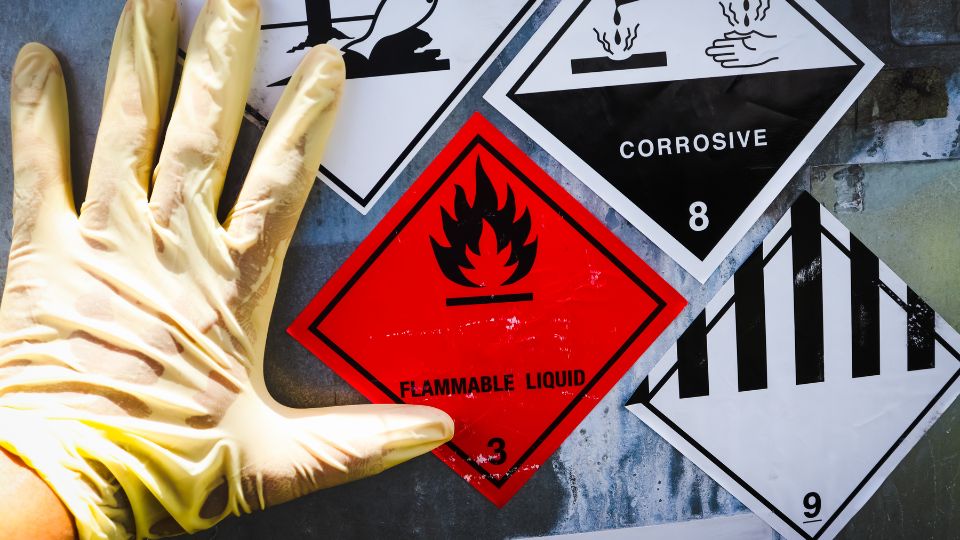
Hazardous waste refers to any material that poses a threat to human health, the environment, or both. Several categories of waste are typically classified as hazardous, including:
- Chemical Waste: This includes substances that are flammable, corrosive, toxic, reactive, or pose other significant risks. Examples include solvents, paints, pesticides, cleaning agents, and certain laboratory chemicals.
- Biological Waste: Waste materials such as medical sharps, contaminated materials, and biohazardous substances fall under this category. They may contain infectious agents or pose a risk of spreading diseases.
- Electronic Waste: Discarded electronic devices, also known as e-waste, contain hazardous components like heavy metals (e.g., lead, mercury, cadmium) and chemicals (e.g., brominated flame retardants). These materials can contaminate the environment if not properly managed.
- Universal Waste: Universal wastes are common harmful materials generated by households, businesses, and industries. Examples include batteries, fluorescent lamps, certain pesticides, and mercury-containing equipment like thermometers and thermostats.
- Radioactive Waste: This waste comprises materials that emit ionising radiation, such as nuclear power plant waste, medical radioactive materials, and laboratory byproducts.
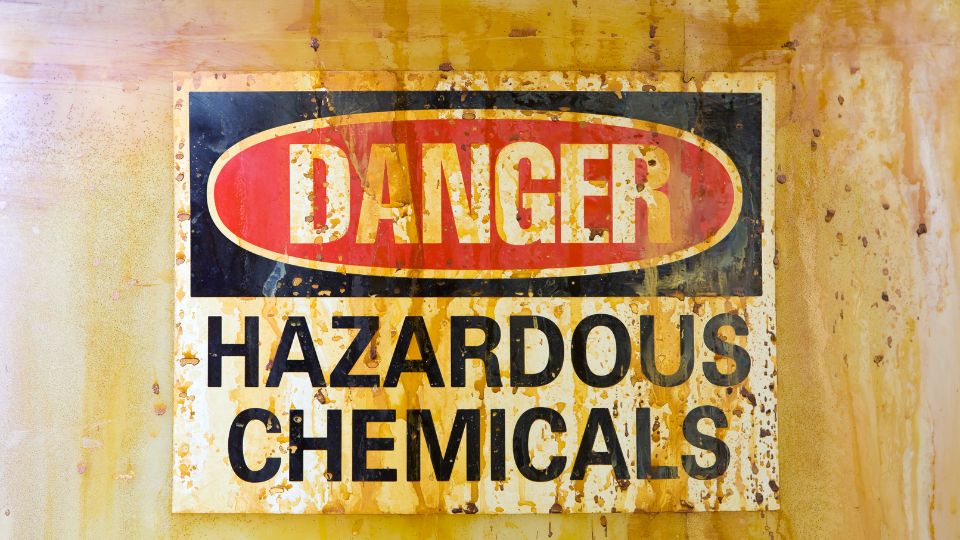
Examples of Hazardous Universal Waste
Universal wastes are specific types of dangerous waste that are subject to streamlined regulations. Common examples of hazardous universal waste include:
- Batteries: Rechargeable batteries (e.g., nickel-cadmium, lithium-ion) and certain types of single-use batteries (e.g., lead-acid batteries) fall under this category.
- Fluorescent Lamps: Compact fluorescent lamps (CFLs) and other mercury-containing lamps are considered hazardous due to their mercury content.
- Pesticides: Certain unused or discarded pesticides, including insecticides, herbicides, and fungicides, are classified as hazardous universal waste.
- Mercury-containing Equipment: This includes devices like thermostats, thermometers, switches, and medical measuring devices that contain mercury.
How Hazardous Chemical Waste is Disposed Of
The disposal of chemical waste typically follows a well-regulated process to ensure safety and environmental protection. Here are common methods of disposing of chemical waste:
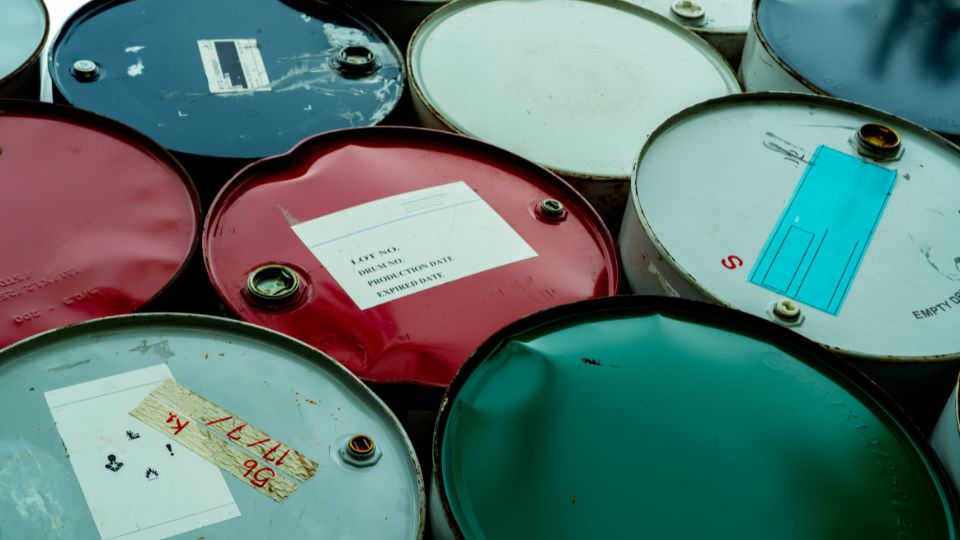
- Treatment and Neutralisation: Hazardous chemical waste can undergo treatment processes to render it less harmful or non-hazardous. This may involve chemical reactions, precipitation, or pH adjustment to neutralise or detoxify the waste.
- Incineration: Incineration involves controlled burning of hazardous waste at high temperatures. This method can effectively destroy or convert the waste into less harmful forms, while energy recovery systems can harness heat generated during the process.
Did you know that the government are putting more red tape on new waste incineration plants? Read more in our dedicated article.
- Landfill Disposal: Some types of hazardous waste that cannot be treated or incinerated may be disposed of in secure landfills designed to prevent environmental contamination. These landfills have specialised liners and systems to collect and treat any leachate produced.
- Recycling and Reclamation: Recycling dangerous chemical waste involves extracting valuable components for reuse while ensuring proper treatment of any remaining harmful substances. This approach reduces the demand for virgin materials and minimises waste generation.
- Secure Disposal Facilities: Harmful waste that requires specialised handling, such as radioactive or highly toxic waste, is disposed of in secure facilities designed to contain and isolate the waste from the environment effectively.
Hazardous Waste Examples
Hazardous waste encompasses a wide range of materials from various industries. Some common examples of offensive waste include:
- Industrial Solvents: Used solvents from manufacturing processes or cleaning activities, such as paint thinners, degreasers, and printing inks.
- Medical Waste: Waste generated by healthcare facilities, such as contaminated sharps (needles, syringes), expired medications, and pathological waste.
- Chemical Laboratory Waste: Waste produced in research, academic, or industrial laboratories, including expired or unused chemicals, contaminated glassware, and chemical residues.
- Oil and Petroleum Products: Waste oil, gasoline, diesel, and other petroleum-based products that can contaminate soil and water if not properly managed.
- Asbestos: Materials containing asbestos, such as insulation, roofing shingles, and vinyl flooring, pose significant health risks if disturbed and released into the air as fibres.
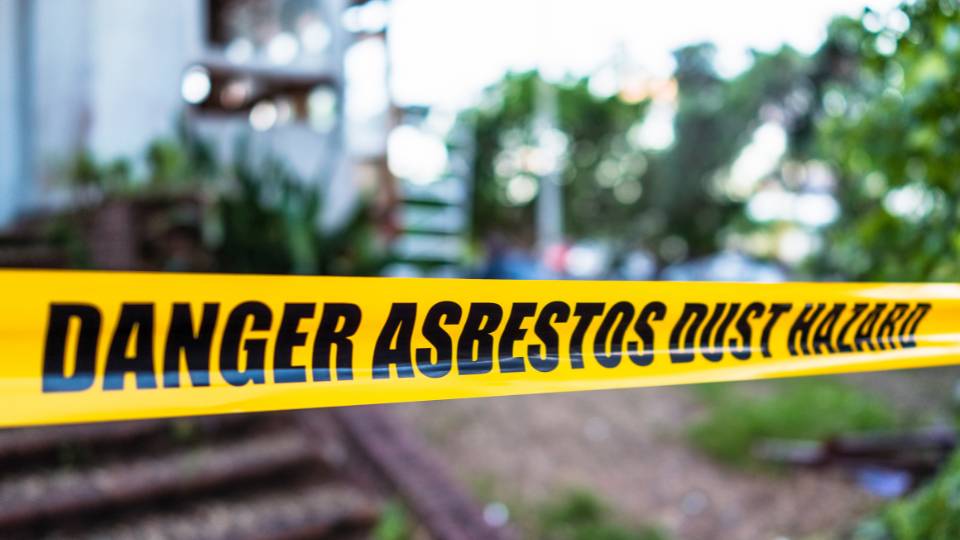
Get Rid of Harmful Waste
Proper disposal of hazardous waste is essential to protect human health and the environment. To get rid of dangerous materials responsibly, follow these steps:
- Identify the Waste: Determine whether the waste you have falls under the category of waste. Refer to local, state, and federal regulations or consult with waste management professionals for guidance.
- Segregate and Package: Separate different types of waste to prevent cross-contamination. Use appropriate containers that are compatible with the waste and meet regulatory requirements for labelling and containment.
- Find a Licensed Waste Management Provider: Look for a reputable hazardous waste collection service provider such as WasteManaged that only use licensed and experienced collectors when handling dangerous materials. Ensure they comply with all applicable regulations and have a strong track record of safety and environmental responsibility.
- Arrange for Collection: Contact the waste management provider to schedule a collection. They will guide you through the necessary steps and provide you with suitable containers and instructions for packaging the waste securely.
- Documentation and Tracking: Maintain proper documentation of the waste generated, including waste manifests, certificates of disposal, and any other required paperwork. This documentation demonstrates compliance and provides a record of proper waste management.
Conclusion
Understanding and responsibly managing hazardous waste is crucial for protecting our environment and ensuring the health and well-being of our communities.
By recognising the different types of hazardous waste, the potential risks they pose, and the available disposal methods as outlined by DEFRA, we can take proactive steps to minimise their impact.
Whether you’re an individual, a business, or an organisation, you have a role to play in hazardous waste management.
Here are some key takeaways:
- Educate yourself: Understand the types of hazardous waste you might encounter and the regulations governing their disposal.
- Reduce and reuse: Whenever possible, prioritise reducing the amount of hazardous waste you generate and explore opportunities for reuse.
- Proper disposal: Use designated collection points or licensed waste disposal companies for safe and responsible disposal.
- Advocate for change: Support policies and initiatives that promote sustainable waste management practices and encourage responsible production and consumption.
Remember, every action counts. By working together, we can create a safer and healthier future for ourselves and generations to come by ensuring responsible management of hazardous waste.

